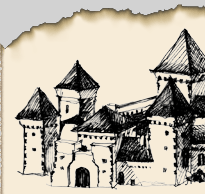


|
Many outstanding scientists of the Middle Ages were interested in abacus calculating. For example French monk Abbo Floriacensis, which was the head of monastic school on Loire, the pupil of Gerbert, the outstanding expert of seven free arts. Parisian Bernelinus in “Liber abaci” described adding, subtraction and multiplication even with fractions in details. The Benedictine monk Hermannus von Reichenau wrote multiplication and division manual. And Adelardus Bathenis was the last who described Gerbert abacus in “Regulae abaci”. Also there were some other writing works. Monk from Monte-Cassino Pandulfus Capuanus described unique abacus in “De calculatione” at the end of 12th century. It has nine vertical columns, where jetons could be placed. Every jeton is equal to one of nine digits (Zero – “0” is excluded). Jetons have different shape. That was done in purpose to reduce a possibility to make a mistake. The shapes are the following: angular (1 to 4), rectangular (4 to 6) and round (7 to 9). Unfortunately Pandulfus only explained the multiplication method, but not left the layout of abacus. Manuscript contains a colour miniature, which is the earliest known image of medieval abacus.
The other invention belongs to the end of 14th century. Very interesting abacus is described in the manuscript by Johannes de Elsa - the canon from Bordeaux and the owner of master's degree. It looked like quadrangular board, with four horizontal hollows on the right edge. Jetons were placed on the surface between hollows, or in these hollows, or on special positions on the left side of the board (simple coins were used as jetons). Johannes used his abacus for calculations with sexagesimal fractions, for money calculation and for usual decimal calculations. The construction of this device is so original, so it is possible to agree with author. He said it is his own invention (“invenit hoc opus”). Leonardo Pisano Fibonacci famous writing work “Liber abaci” appeared in 1202. There he compared calculations with help of abacus and calculations on the sheet of paper with help of Arabic numerals. These calculation methods had followers: abacists (or gerbecists - in honor of Gerbert de Aurillac) and algorists.
Gradually abacus lost its position, but even in 16th century calculation with help of abacus was still one of the most important educational topics. So arithmetic teachers were called as “Masters of abacus” in many European countries. |




